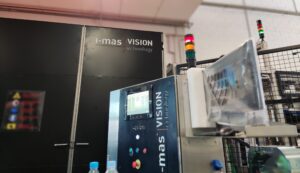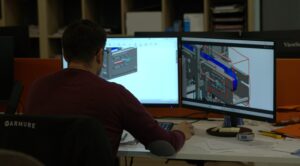Artificial vision is a subset of artificial intelligence (AI) focused on developing techniques that enable machines to identify and process images in the same way that human vision does. This technology has many applications in the industrial sector and, in this article, we tell you about some of them.
Machine vision systems are a combination of hardware and software with the ability to capture and process data and images. These systems offer high precision, consistency, and mechanical and thermal stability. They are typically composed of digital sensors embedded in industrial cameras capable of analyzing images and data.
How does Artificial Vision work?
This technology is integrated into the industry and is part of the production chain. Artificial vision systems give machines the ability to process an image, emulating human vision, but with some distinctive characteristics.
The process and operation of these systems start with image acquisition, for which we need to have sensors. These will capture images that, together with software that applies the necessary processes, will detect defects, take measurements, move parts or perform any other function for which the machine has been designed.
What is machine vision used for?
Artificial vision is part of one of the areas of Artificial Intelligence. These concepts are already being integrated into the main products we use daily. Furthermore, these systems have applications in various areas, from the healthcare sector to the automotive industry.
One of the clearest examples is cars. These are equipped with video cameras that record images from different angles and transmit them to the computer vision software. It processes them in real time and finds the ends of lanes, reads traffic signs, detects other vehicles, objects and pedestrians…
What other application does artificial vision have in everyday life? You probably have a phone in your hands that has facial recognition, which is another clear example of the wide variety of applications of computer vision systems. The algorithms of artificial vision can detect facial features and compare them with the database. These applications are used for facial recognition, to detect and label users.
In other areas such as healthcare, machine vision algorithms can help automate tasks such as detecting cancerous moles in skin images or finding symptoms in X-rays and MRIs.
Artificial Vision at i-mas
In the engineering area of i-mas, we have developed projects for different sectors, which has allowed us to better understand the industry in order to offer integral solutions for the automation of different processes. We work to offer the best machine vision and other technologies to our customers.
The common thread of our projects is sustainability; we consider the different processes throughout the life cycle of a machine and work to ensure that each step is environmentally friendly.
Find out more about i-mas artificial vision projects here.



